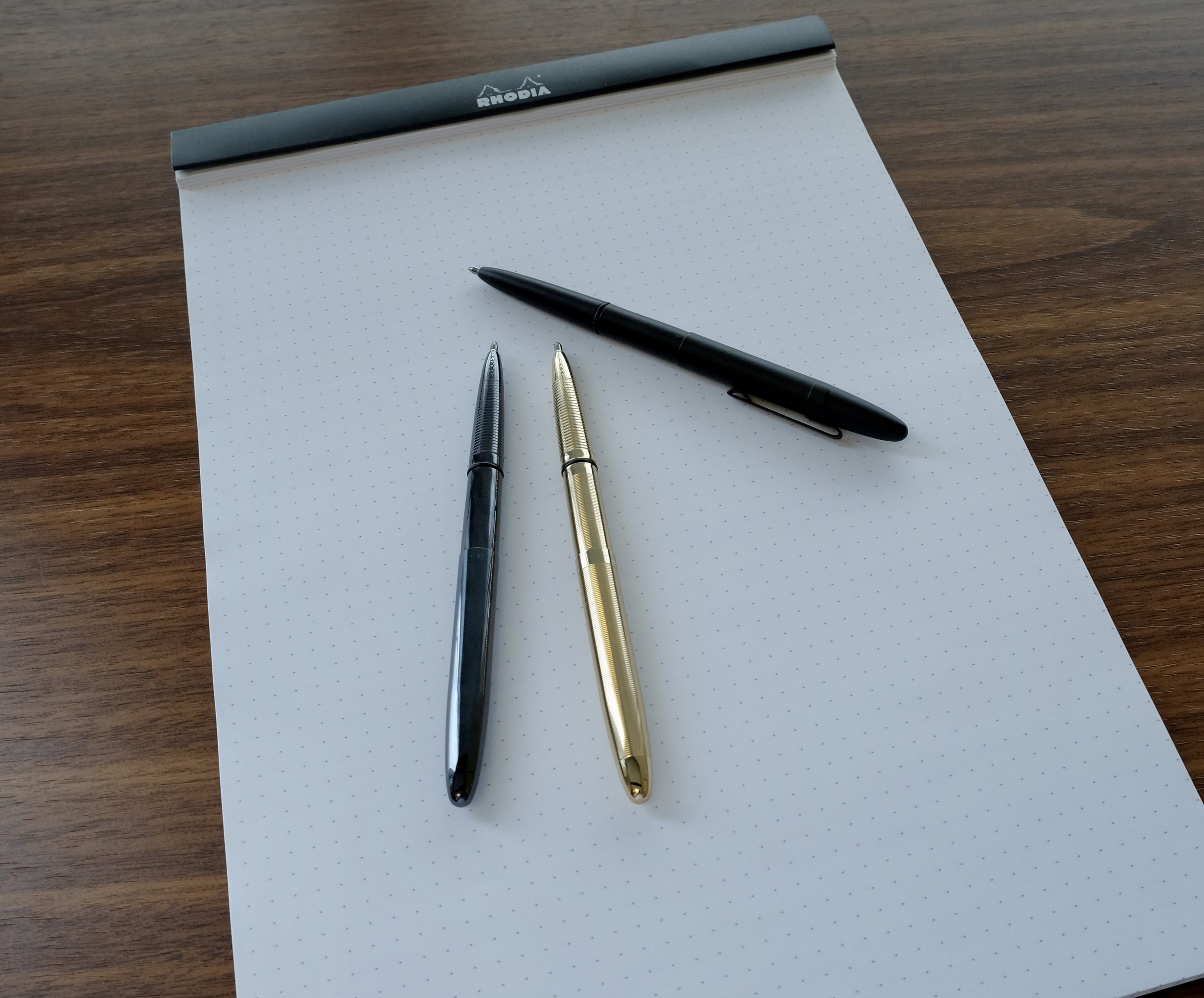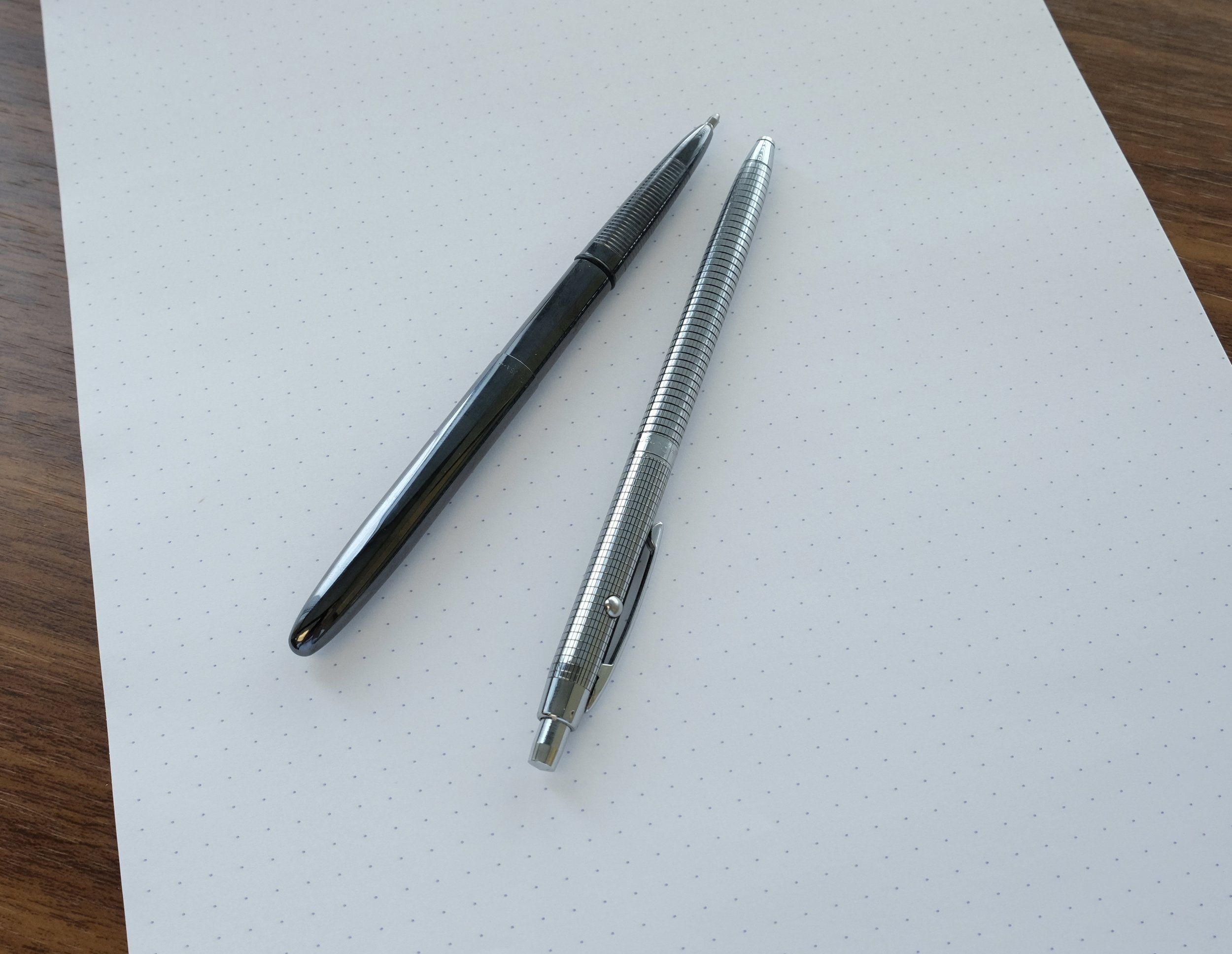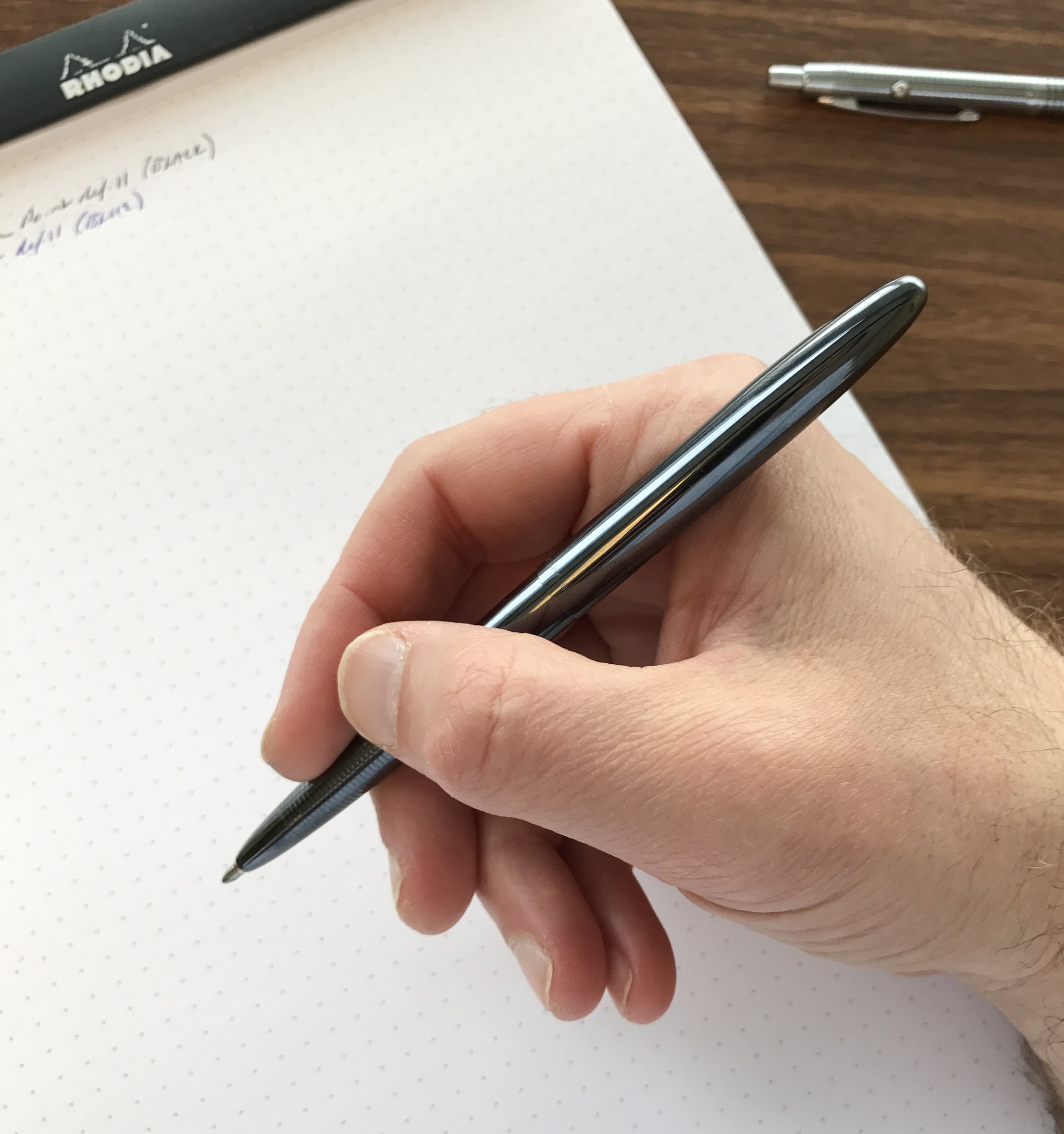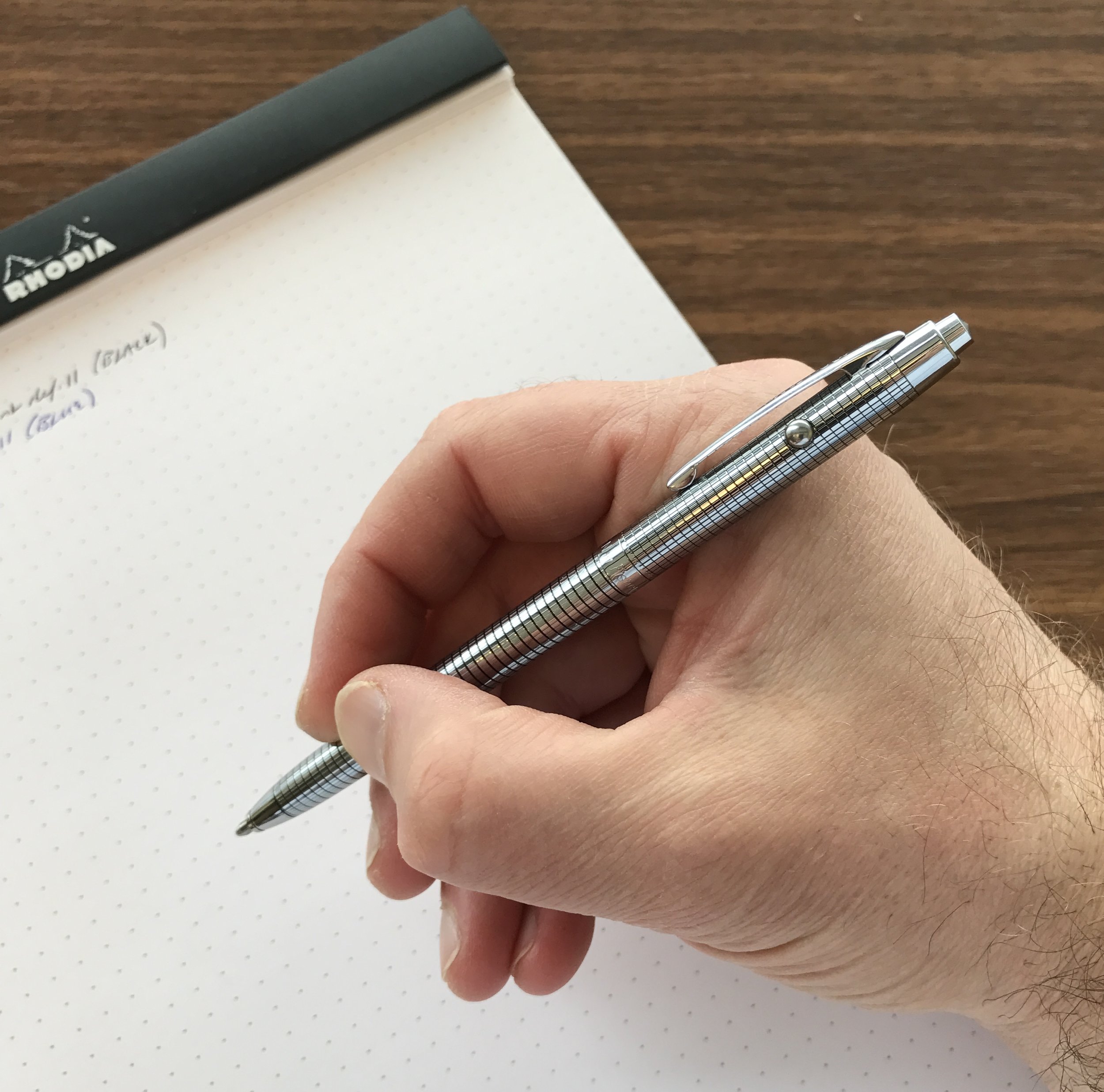A staple of the everyday carry community, Fisher Space Pens tend to get overlooked by pen addicts who tend to instinctively avoid ballpoints, and that's unfortunate. Fisher Space Pens are great "write anywhere" additions to your arsenal, and despite a few small nits, their widespread availability and versatility make Fisher Space Pens an easy recommendation.
History
If you grew up in the 1980s or earlier (at least in the U.S.), you recognized the Fisher Space Pen by the ubiquitous magazine ads touting the brand's association with NASA. The original Fisher Space Pen was privately developed by Paul C. Fisher as a pressurized ballpoint pen that would write in a zero-gravity, extreme-temperature environment, with the intent of marketing the pen to the U.S. space program. Sorry pencil fans, but Snopes has busted the long-touted myth of the Fisher Space Pen as a solution in search of a problem, and a symbol of overpriced and over-engineered 1960s Space Race excess. As it turns out, "the Russians just used a pencil" story isn't exactly true: while all space programs used pencils in the early days, broken pencil leads pose a hazard when floating around in zero gravity, and woodcase pencils are, well, flammable, especially in a pure oxygen environment. Paul Fisher apparently spent a ton of his own money developing the pens and eventually succeeded in selling them to NASA and other space programs.
Writing Experience
Fisher Space Pen refills come in two tip sizes: fine and medium. Here, the Titanium Nitride pen (far left) has a blue "fine" refill, while the other two have black "mediums."
The Fisher Space Pen refill is highly engineered to perform pretty much anywhere. According to the company's website, the "sealed pressurized ink cartridge performs in temperatures from -30F to +250F, underwater, in zero gravity, at any angle - even upside down!" While I've not had the opportunity to test these more extreme claims (and probably/hopefully never will), the pen does an excellent job of writing on multiple surfaces - including the Field Notes Expedition notebooks - and, yes, it does write upside down, making it a convenient choice for situations when you don't necessarily have a flat writing surface available. The refill writes like a traditional oil-based ballpoint, and the only drawback I've found is that the tip can develop a bit of crust if you let the pen sit unused for too long. (A simple wipe or scribble normally solves the problem.)
A Fisher Space Pen writing sample. While there's not a huge difference, I prefer the fine.
Bullet or Click Pen?
The Fisher Space Pen Company sells multiple models of the Space Pen, but the most popular is the ubiquitous "bullet pen," available in a variety of finishes. I own three: the classic matte black, the black titanium nitride, and the brass. When closed, these pens are tiny, and slide easily into a pocket. When posted, they expand to a reasonable length, which allows them to be used for most types of writing. One thing I will note - the bullet pens aren't particularly scratch or dent-resistant. Given how small they are, I've dropped mine on hard surfaces several times, and they are prone to developing small dents in the tips. (The dents aren't severe, and don't show up very well in the photographs.)
My three Fisher Space Pen Bullets, from left: Titanium Nitride, Brass, and Matte Black (with clip). Check out the gallery below for additional images of the pens extended, in hand, etc.
My favorite Fisher Space Pen, however, is the original Astronaut Space Pen, which according to the company is essentially the same pen as the one taken to the moon in 1969. I own the "Shuttle" version with the black grid design. I love the click mechanism on this pen, which has a button on the side that you use to retract the tip. It's a slim pen, similar to a classic Cross Century II, but it has added length that makes it a better pen for extended notetaking in meetings, etc.
The Fisher Space Pen Astronaut "Shuttle" pen with the black grid design. Aesthetically, this is one of my favorite models of the Space Pen.
Takeaways and Where to Buy
Like I said, Fisher Space Pens are an easy recommendation if you're looking for a relatively inexpensive, write-anywhere option. Personally, I use the Astronaut pen more than the Bullets on a day-to-day basis, but the latter are a fixture in my travel bag when I'm on the road due to their compact size. As long as you can tolerate ballpoints, the refill is reliable and readily available in fine or medium widths either online or in most brick-and-mortar office supply stores. (Most Fisher Space Pen refills also come with a small plastic adapter that allows you to use them as Parker-style refills in other pens, if you enjoy the refill but find the Fisher Space Pen bodies too small.) The pressurized Fisher refills can be somewhat expensive, but they seem to last longer than a typical ballpoint refill.
UPDATE: As of 2024, we now carry a selection of Fisher Space Pens in our own shop, including the Bullet Pens, the original AG7 Astronaut Pens, and the Shuttle Pens, along with a wide array of Fisher Space Pen refills.
Further Reading: If you like the Fisher Space Pen "bullet" form factor, but find yourself losing a lot of Space Pens, check out my review of the Pokka Pen, which was designed as a solution to this specific problem.
Disclaimer: I purchased the pens featured in this review with my own funds, for my own collection.




